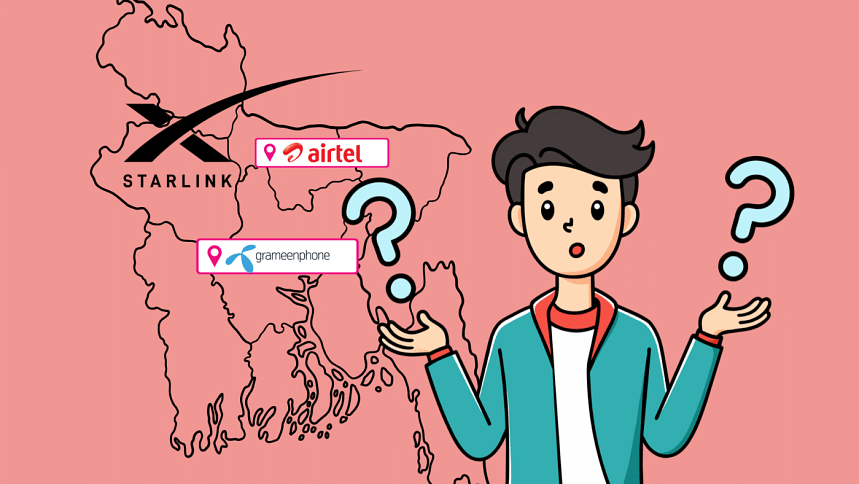Do you really need Starlink? Time to dispense with the myths

So, Starlink has arrived in Bangladesh. There's buzz. There's excitement. There's even that one friend in the group chat who's trying to convince everyone it's the future of the internet. And to be fair, the launch does feel a bit like the opening scene of a sci-fi movie — space-based internet beaming straight into your living room.
But before you rush to pre-order a dish and rearrange your rooftop, let's hit pause. Because, no, Starlink is not a magic solution. And no, it's not the fastest internet in town. In fact, depending on how you use the internet, it might not even make sense for you.
Let's start with the most common myth: "Starlink is faster than what we have now."
Not really. Most decent ISPs in Dhaka and surrounding cities already offer stable 500 Mbps fibre broadband packages for far less than what Starlink is asking. The Residential Lite Starlink package, priced at Tk 4,200/month, offers speeds up to 100 Mbps. The full Residential plan hits around 250–300 Mbps, but you're paying Tk 6,000/month plus a one-time hardware cost of Tk 47,000! That's a chunky commitment when you already live in an area with stable cable internet and indoor Wi-Fi that doesn't get interrupted by cloud cover.
Another misconception? "It's perfect for gamers."
Let's not kid ourselves. Starlink's latency — averaging 60–100 milliseconds — is far too unstable for real-time multiplayer gaming. Even a brief lag spike can make or break a match or a ranked Mobile Legends tournament. Satellite internet, by design, has this slight delay because your data literally travels to space and back. This isn't a big deal for Netflix or Zoom. But for Twitch streams, online duels, or competitive gaming? You're better off with traditional broadband.
"So, I can get Wi-Fi on my phone anywhere in the country, right?"
Nope. That's not how it works. Starlink doesn't create some invisible national Wi-Fi bubble. The hardware setup — dish, router, power — has to be installed at a fixed location. It's not like 4G where your phone automatically connects. So, if you imagined trekking in Bandarban and checking Instagram stories from a mountaintop on your phone, that's not happening unless you carried a dish, a router, power supply and a solid table up the trail. And yes, we've seen people try.
Here's another angle that doesn't get talked about enough: Starlink is not immune to government control.
Yes, it feels tempting to believe that satellite internet will bypass local restrictions and stay "on" when all else stops. But dig a little deeper and you'll find that this is more myth than reality. To legally operate in Bangladesh, Starlink had to sign off on licensing terms that align with our telecom regulations. That includes the government's right to suspend services in "national interest." It's written in ink. So, in a scenario where all local networks are shut down during unrest, don't expect Starlink to heroically remain online either.
So, who is Starlink for then?
It's for those living in truly remote areas — places where fibre broadband is still a pipe dream, or has the speed of 90s dial-up. It's for NGOs operating in coastal or haor regions, for researchers based in char areas, and for travellers or digital nomads who must stay connected from hard-to-reach places. It's a game-changer in those contexts. But if you're in Gulshan, Dhanmondi or even Savar, and your broadband works better — you don't need Starlink. You just like the sound of it.
Fun fact to chew on: Starlink's satellites are designed to de-orbit and burn up after around 5–7 years. So, even the stars bringing you internet aren't staying forever.
In a nutshell: It's exciting, yes. It opens new doors, sure. But don't fall for the hype blindly. Starlink is a tool, not a lifestyle upgrade. And unless your lifestyle involves needing internet on a bamboo raft in Lama, you're probably doing just fine without it.

 For all latest news, follow The Daily Star's Google News channel.
For all latest news, follow The Daily Star's Google News channel. 








Comments